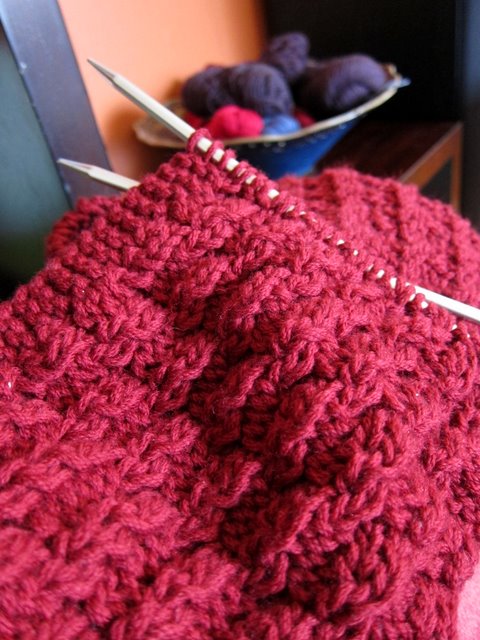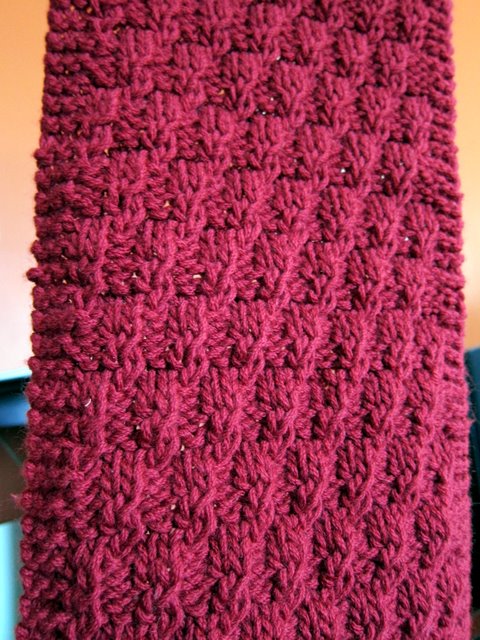Following someone elses' patterns will only get you so far in life and quilting. Knowing how to take what someone else has put forward and bend it to your whims opens you up to a ton of potential. Here's my rough guide for how to resize a quilt pattern to the dimensions you want. All you need is a calculator, scrap paper and a smidge of determination.
A note of warning: This won't work with all quilt patterns, but should work for the majority of patchwork designs.
A note of encouragement: Math isn't scary. Your high school math teacher was.
To resize a pattern, you need to decide the following:
- What size do you want the quilt to be?
- Do you want to change the number or the size of the blocks? (changing the number is easier)
What size quilt do you want?
Before you can resize the pattern, you need to know how big you want it to be.
Below are roughly the quilt dimensions I use. No one is going to get bent out of shape if you make the sides a little longer or shorter. And if they do, I recommend smiling and backing away from the crazy slowly and with no sudden movements.
This site has more information about quilt sizes.
Mattress
|
Quilt Dimensions (WxL)
|
| Crib |
32" x 54" |
| Twin |
68" x 86" |
| Full |
86" x 86" |
| Queen |
90" x 90" |
| King |
100" x 90" |
Fun with Math
The above measurements are for the full quilt top, but usually quilt pattern will have borders. We need to get to the dimensions of the center pieced part by removing the borders. You can change how thick you want the borders to be on the new quilt, but make sure to account for that.
Old Pattern
Width of completed quilt:______ (A)
Length of completed quilt: ______ (B)
Width of all borders: ______ (C)
Width of center block: A-C=______ (D)
Length of center block: B-C=______ (E)
New Pattern
Desired width of completed quilt:______ (a)
Desired length of completed quilt: ______ (b)
Width of all borders: ______ (c)
Width of center block: a-c=______ (d)
Length of center block: b-c=______ (e)
You will need the length and width numbers of the center sections later, so note them down.
Do you want to change the size or the number of blocks?
If you want to change a quilt's size, you can do so by adding additional blocks or by creating the same number of blocks, but adjusting their size. Decide which you'd prefer and do one of the following. I, personally, prefer changing the number of blocks, because it's less complicated to scale the pattern.
I want to change the number of blocks
This is pretty basic math: How long do you need each side to be/size of the blocks.
You should have the length and width of pieced section in fields (d) and (e) above. Divide each by the block size and round to the nearest block. If the pattern doesn't specify the dimensions of the finished block, make one and measure it. Reduce each side by .5" to account for seam allowance.
Things I can pull from the pattern:
- Each square is 2.5" when finished (they are cut at 3"-.5" seam allowances)
- We need an even number of rows (length), because the pattern has the in color sets
- We can have even or odd in the columns (width)
- There are no borders, so we do not have to account for this.
Assuming I want to make this a twin size quilt, I want the sides to be as close to 68"x86" as possible (referencing the chart above).
Width: 68" (width I want) /2.5" (block size) = 27.2 blocks
Length: 86" (length I want) /2.5" (block size) = 34.4 blocks
Round to the nearest block, and you'd need 27 blocks across by 34 rows (or seventeen 2-row color stripes) long
I want to make the same number of different sized blocks
Scaling the blocks works if you want the quilt to be the same proportions, but a different size. It would not work to scale a twin size quilt to queen, because a queen is square, whereas a twin is rectangular.
To resize the blocks, you need to resize each piece's calculations. You can end up with some off measurements (5/8th of an inch instead of 1/4th), so I only recommend this if you're comfortable with math and good at solving issues as they arise. They will.
In order to do this, you need to determine how much larger you want the pieced center to be as a percentage, and then cut each piece that percentage larger, excluding the seam allowance.
This quilt is 36"x48". Let's say I want it to be 54" wide.
First, determine the percent increase: (new dimension)/(old dimension) 36/54=1.5 or 150% It needs to be the same percentage in both directions. Therefore the length will be 48"x1.5= 72" for a finished dimension of 54"x72".
Next, resizing the blocks: This pattern is actually easy, because there isn't much piecing. You will remove the seam allowance (.5") from the size of block the pattern tells you to cut, multiply that by the percentage you want to change the block's size, and add back in the seam allowance.
((pattern's sizes to cut - .5" seam allowance) x percentage increase) + .5" seam allowance
Or, using the pattern's numbers, 3" cut blocks - .5" for seam allowance = 2.5" x 1.5 (the increase) = 3.75" (new finished block size) + .5" seam allowance = 4.25"
You'd cut 4.25" squares, and the blocks will be 3.75" after being sewn. You'd use the same number of blocks and placement as the pattern originally called for.
Get more fabric
Determining how much more fabric you need for the resized quilt is a tutorial in itself. I'm not going to go into it here, but here are some resources:
Triple check your math before cutting
No, really. Check it. Maybe a fourth time for luck.
Questions? Anything I have wrong?







